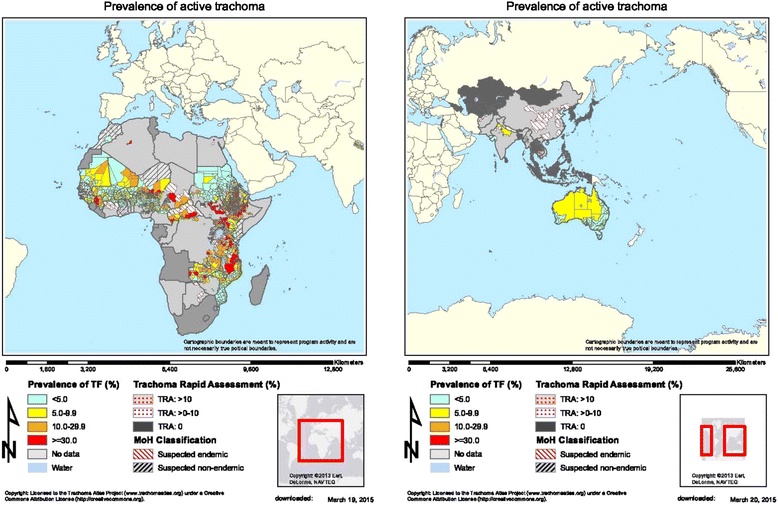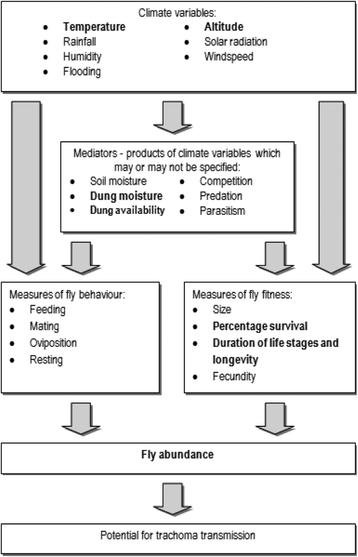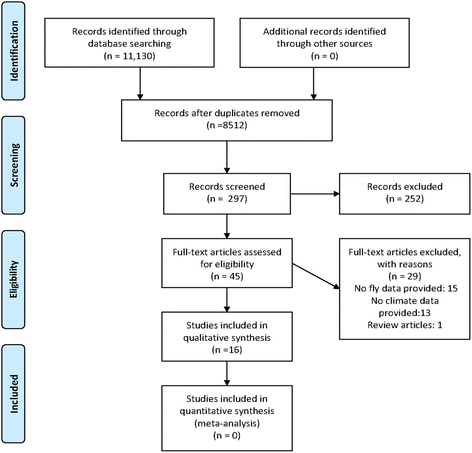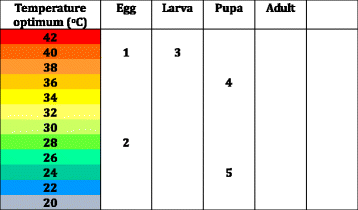The impact of climate on the abundance of Musca sorbens, the vector of trachoma
- PMID: 26817815
- PMCID: PMC4730668
- DOI: 10.1186/s13071-016-1330-y
The impact of climate on the abundance of Musca sorbens, the vector of trachoma
Abstract
Background: To assess the extent to which climate may affect the abundance of Musca sorbens, a putative vector of trachoma.
Data sources: Studies were identified by systematically searching online databases including CAB abstracts, Embase, Global Health, Medline, Web of Science and BIOS Online, references from key articles, and the websites of relevant international agencies.
Methods: A systematic literature review was conducted of field and laboratory studies that reported the impact of climate factors (e.g., temperature, humidity) on the synanthropic fly Musca sorbens. Data were systematically extracted and studies assessed for quality by two readers. Study results were reported narratively.
Results: A total of 16 studies met the inclusion criteria but only three evaluated associations between climatic/abiotic factors and M. sorbens. Limited evidence indicates that M. sorbens abundance has an optimal temperature and humidity range. Thirteen studies reported seasonal patterns but no consistent pattern was found between season and the abundance of M. sorbens.
Conclusions: The evidence base regarding the effect of climatic factors on M. sorbens is limited, so it is difficult to construct a biological model driven by climate for this species. A multivariate statistical approach based on the climate of sites where M. sorbens is found may better capture its complex relationship with climatic factors as well as aid in mapping the global range of M. sorbens.
Figures






References
-
- World Health Organization (WHO). Trachoma Geneva: WHO; 2015 [cited 2015 July 25 2015]. Available from: http://www.who.int/mediacentre/factsheets/fs382/en/.
-
- International Coalition for Trachoma Control (ICTC). The International Coalition for Trachoma Control (ICTC) 2015 [cited 2015 July 25, 2015]. Available from: http://www.trachomacoalition.org/.
-
- World Health Organization (WHO). Trachoma: Prevention of Blindness and Visual Impairment 2015 [cited 2015 July 25, 2015]. Available from: http://www.who.int/blindness/causes/trachoma/en/.
Publication types
MeSH terms
LinkOut - more resources
Full Text Sources
Other Literature Sources
Miscellaneous

